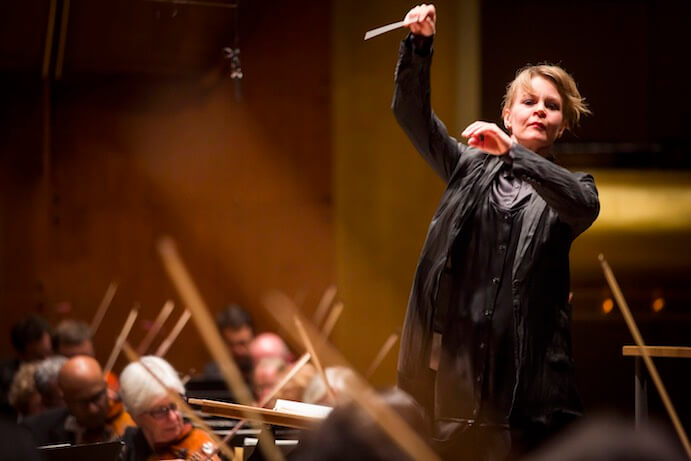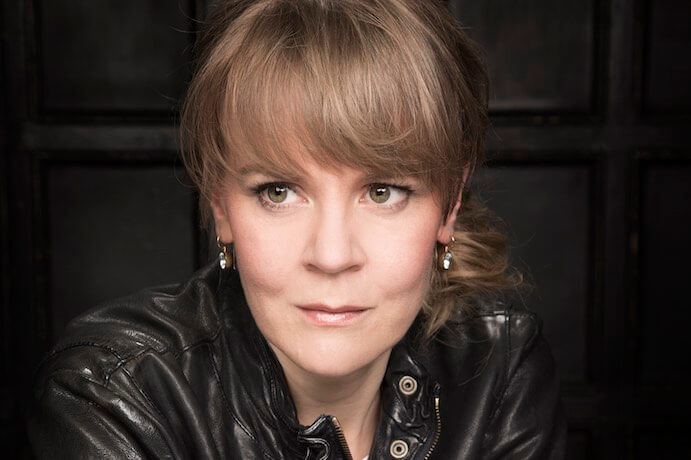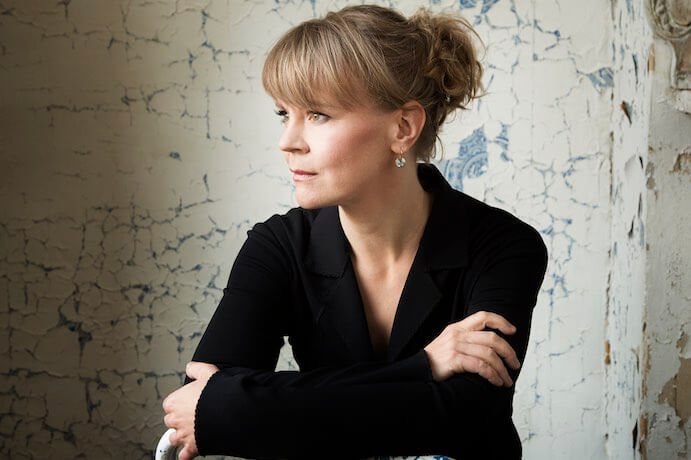Susanna Mälkki is a Finnish conductor at the forefront of the international symphonic world, who is much in demand in contemporary music and opera. She was recently appointed the Chief Conductor of the Helsinki Philharmonic Orchestra and Principal Guest Conductor of the Los Angeles Philharmonic. She is the first woman to be Music Director of the Ensemble intercontemporain. She made her debut with The Metropolitan Opera in 2016, conducting its premiere of Kaija Saariaho’s L’Amour de loin, which placed both conductor and composer among the rare few women in those roles throughout the Met’s history. She is the first woman to conduct a production in Teatro alla Scala’s 240-year history: Luca Francesconi’s Quartett. She began her professional life in orchestral music as a cellist, and was a principal of the Gothenburg Symphony. She is a recipient of numerous honours including the Pro Finlandia Medal of the Order of the Lion of Finland. We asked her about her upcoming participation in LA Phil 100, the orchestra’s ambitious 2018/2019 centennial season, as well as bringing a progressive approach to the arts.
What are your goals in conducting for LA Phil 100, in a series of programs that include Sibelius and Shakespeare’s The Tempest, premieres of new works by Kaija Saariaho, Lotta Wennäkoski, and Steve Reich, as well as landmark symphonies by Mahler and Messiaen?
The goal is, as always, to give the audience the most memorable concert experience possible with these fantastic works! It’s very exciting to perform such a rich range, too–works by living legends such as Steve Reich (I’m truly honoured to conduct the world premiere by him) and Kaija Saariaho; two of the most glorious pieces for symphony orchestra ever written: Mahler 5 and Turangalila-symphony; presenting a whole new generation of composers like Lotta Wennäkoski; and focusing again on the fascinating subject of words and music with another Shakespeare play, this time set in the mood of Sibelius. I am greatly looking forward to making music with the orchestra again.

Susanna Mälkki making her debut conducting the New York Philharmonic with Kirill Gerstein as soloist on piano performing at Avery Fisher Hall, 5/21/15–Photo by Chris Lee
The concert “European Avant-Garde” will feature no less than five world premieres by European composers, something virtually unheard of in a mainstream American concert series. How important is it to introduce orchestras and their audiences to music by living composers?
I think it is essential. We live in the 21st century: we follow the news, we follow the progress in science, we follow fashion, and so we also open the stage for the music of our time. I think that curiosity, discovery, and evolution are just as important elements in culture as they are in every other field of life.
If you were to compare the process of rehearsing an orchestral work for premiere, especially one that may incorporate techniques that are unfamiliar to some of the performers, and rehearsing an older, established piece, what would be the key differences?
With a repertoire piece, every new interpretation is like a new point of view added to an existing discussion, so in principle–with a good orchestra–the starting point is that everyone knows already the references and the style when the rehearsals begin. With a new work, the first reading is like visiting a new territory altogether. Everyone has their individual map, and we may recognize elements from other pieces by the same composer or the same style, but everything has to make sense in a new way in a new context and in a new soundscape. The conductor’s role in the process is to guide the orchestra to find the essential in the new field. This may mean different kinds of clarifications for the new indications on the ”map,” zooming out for an overview, and zooming in for a special focus… sometimes even just a bit more time may be needed, but when a work is well-written and has a clear personality, it’s the music which finally guides us all.
Can you talk about the ways in which your work with the LA Philharmonic creates opportunities for underrepresented communities—including women, and extended to include other marginalized groups—in classical music?
In the arts, the human spirit should always be in the center, and the message of a work of art is always more important than the messenger. However, the classical music traditions have been mirroring the values of the societies in which the works have been written. and often limiting either the access or the message for their own purposes. An awareness of this is important, and there is indeed a lot of fabulously interesting and important music by “groups” previously ignored. We program music by Saariaho and Wennäkoski because they are very good composers–it would be a mistake to ignore them for any reason whatsoever. Same goes for everybody. However, what I would like to add is that we must also be careful to not pigeon-hole anyone!

Susanna Mälkki–Photo by Simon Fowler
Finland (and Scandinavia in general) is renowned for being highly supportive of arts education and development. What do you see in terms of areas for improvement in the arts in the United States, perhaps where you might bring your own experience as an example?
A comparison between our countries, so different in size, history and structure, is quite complicated and might not even be possible. (Perhaps comparing different individual states in the US might just about be.) But in Finland, some of those fundamental differences have resulted in the fact that all children in Finland had, in the time of my youth, an access to good education and at least a basic musical education. Musical education in turn strengthens all other learning, as brain research proves…. I would probably have studied music in any case, but growing up in a country where there was also a strong sense of pride and idealism for culture was definitely a support, not to forget about the same fundamental chances for girls and boys. I think the same kind of human values can exist in differently-structured societies. Willingness to defend and strengthen those higher values is what creates a strong and flourishing culture.




















